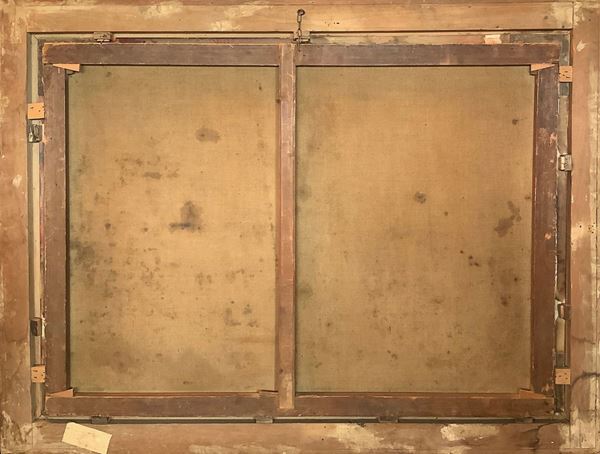17
Johann Heinrich Roos (Otterberg, September 29, 1631 - Frankfurt am Main, October 3, 1685), Oil paintinging on canvas depicting the landscape with ruins, waterfalls and flock. signed on the lower right corner J. Roos. Cm 90,5x129,5, in frame cm 116x153. "His family emigrated to Amsterdam because of the Thirty Years War in 1640. He was a pupil of Guilliam du Gardijn, Cornelis de Bie and Barent Graat, but the landscape painters Nicolaes Berchem and Karel Dujardin had the greatest influence on him
Johann Heinrich Roos (Otterberg, September 29, 1631 - Frankfurt am Main, October 3, 1685), Oil paintinging on canvas depicting the landscape with ruins, waterfalls and flock. signed on the lower right corner J. Roos. Cm 90,5x129,5, in frame cm 116x153. "His family emigrated to Amsterdam because of the Thirty Years War in 1640. He was a pupil of Guilliam du Gardijn, Cornelis de Bie and Barent Graat, but the landscape painters Nicolaes Berchem and Karel Dujardin had the greatest influence on him. in 1653 the Roos family back to Germany, where Johann and his brother Theodor Roos work together on a commission for a cloister in Mainz. Between 1654 and 1659, Johann worked for Ernst, Landgrave of Hesse-Rheinfels (son of Maurice lived between 1623 and 1693), where he painted a portrait of a Prince (1654, Heidelberg, Kurpfälzisches Museum) and religious scenes. in 1664 he was invited to paint at the court of Charles I Louis, Elector Palatine. because of conditions unsatisfactory work, he moved with his family to Frankfurt in 1667, where he very successfully, but lost everything in a fire in 1685.
The painting in question seems to be the best that could express the painter, when voule represent the union of men and animals in idyllic harmony with nature - this was his thought that aspired to give his paintings a realistic character footprint, especially in rural scenes and depictions of animals. In the present case, there is a sense of racy lingerie, almost familiar, that globalization in a union harmonizing landscape, and therefore nature, humans and animals. If we were induced to a comparison with his son Philipp Peter, we could say that is much more moody and intimate in the search for a link with the whole of nature, and less theatrical, almost not wanting to be enfatizzante as the son, who often adopts in the foreground scenes of animals and depictions portraiture almost the same. ASORstudio
€ 6.000,00
Starting price
Mot provided




